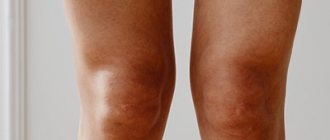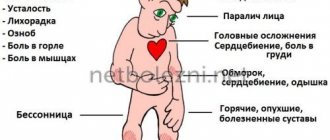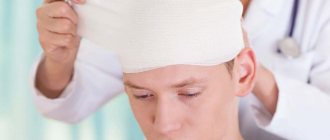Cerebral palsy is a broad concept that unites a group of movement disorders that progress against the background of damage to brain structures in the perinatal period. The pathology is characterized by intellectual impairment, mental disorders, gait disturbances and motor coordination. In the first year of life, children noticeably lag behind their peers in motor and mental development. People with cerebral palsy need lifelong rehabilitation, medication, physiotherapy and surgical treatment as indicated.
General information about the disease
Cerebral palsy is a motor function disorder that occurs as a result of serious changes in brain structures. According to statistics, the frequency of this diagnosis is 2-7 cases per 1000 people among children under 1 year of age. The prevalence among premature newborns increases 10-fold.
Depending on the area of localization of the affected area of the brain, there are 5 types of lesions.
- Spastic diplegia. Prevalence is about 40% of the total number of cases. Characteristic damage to the motor centers leads to the development of paresis affecting the legs. The hemiparetic form is characterized by damage to the motor centers of one of the hemispheres.
- Hyperkinetic form. Characterized by damage to subcortical structures. Hyperkinesis intensifies against the background of excessive excitement or fear of the child.
- Atonic-astatic form. Diagnosed when a lesion is detected in the cerebellum. This form is characterized by impaired statics and coordination, muscle atony.
- Double hemiplegia. The most severe form, resulting from volumetric damage to both hemispheres of the brain. Children are unable to sit or stand and cannot hold their head up on their own.
- Mixed forms. Characterized by a combined manifestation of symptoms inherent to varying degrees in each type.
In the first few days or even months of life, the child is no different from his peers. Symptoms of cerebral palsy may appear much later. Their severity depends on the degree of brain damage, timely diagnosis and treatment. The clinical picture inherent in the pathology looks like this:
- decreased or increased muscle tone;
- skeletal deformity;
- preservation of reflexes that disappear in healthy children under 6 months of age;
- convulsions;
- problems in the functioning of the organs of vision and hearing;
- violation of the swallowing reflex.
The main reason provoking the disease is the negative impact of various damaging factors on the child. This influence provokes the death of certain parts of the brain. The prerequisites for the development of the disease appear against the background of pathologies of pregnancy and infections.
Are you experiencing symptoms of cerebral palsy?
Only a doctor can accurately diagnose the disease. Don't delay your consultation - call
Diagnosis of cerebral palsy begins with a full examination by a pediatric neurologist. If neurological spectrum disorders are suspected, instrumental diagnostics are used:
- encephalography;
- transcranial magnetic stimulation;
- electromyography;
- electroneurography.
The listed methods allow us to differentiate the pathology and exclude other congenital defects of a neurological nature.
The most common consequences include:
- disability;
- violation of social adaptation;
- arthrosis;
- muscle contracture;
- lack of positive dynamics;
- Difficulty eating due to impaired swallowing.
If a child has a risk of developing cerebral palsy, prevention of its development is provided immediately after birth (if the condition is critical, after its normalization). In their practice, rehabilitators use several schemes, determining the optimal one, depending on the risk group into which the child falls.
If the risk is low, use fitball exercises, developmental gymnastics, aquatherapy, baby yoga, dynamic gymnastics, massage, and physiotherapy with caution. At high risk, neurological physiotherapy, aqua therapy, massage, and physiotherapy are used. Courses are conducted every month until the child is 1.5 years old. Parents reinforce the effectiveness of sessions at home by conducting classes according to the recommended scheme.
Signs, causes and forms of cerebral palsy
Cerebral palsy is a group of non-progressive conditions associated with damage to the brain in the early stages of its development. As a rule, the brain is damaged in the unborn child, less often during or after childbirth. The disease and its consequences are in many ways similar to a stroke - some have mild problems with movement and speech, some have difficulty moving, some will need a wheelchair, and some will not even be able to lift their heads on their own.
The result of a slight injury in a child will not be noticeable immediately, since the newborn cannot walk, talk or make complex movements with his hands. His problems in these areas are not visible, but as the child grows older and must begin to roll over, sit up, walk and grasp toys, the problem becomes obvious. Therefore, parents do not immediately understand that the child needs help in the special development of these skills - habilitation.
Cerebral palsy can manifest itself in various forms:
- The child may have increased tone in the arms and/or legs.
- He may not crawl, sit down, or roll over.
- May be missing or have difficulty grasping a toy or support.
- May not sit on a chair or hold a spoon.
- May speak poorly or not speak at all.
Cerebral palsy cannot be cured with medications, homeopathy, surgery or alternative medicine. The point is brain damage, part of which was destroyed before birth. Each area of the brain is assigned a specific function, and this function has long been lost.
However, “cannot be cured” does not mean cannot be developed.
Thanks to this approach, our rehabilitation program for cerebral palsy is individual, focused on the needs of the family and the needs of the child.
More articles on this topic:
Features of rehabilitation of children and adults with cerebral palsy
How to transport children with cerebral palsy in a car
Write to us what difficulty you encountered, and we will suggest further steps for rehabilitation or provide the missing information.
Treatment information
Treatment of cerebral palsy with restoration of quality of life to a full level is possible if you follow the doctor’s recommendations. You shouldn’t count on achieving quick results; these involve many years of training, courses of therapy, and sometimes operations. Much depends on the severity of the disease and how early cerebral palsy is detected. If symptoms are detected early, the prognosis is encouraging.
During the first months after the birth of a child (if a presumptive diagnosis is not established immediately after birth), the following signs help to suspect the disease:
- hypotension;
- pain syndrome (characterized by a loud cry);
- tremor;
- chaotic movements of limbs;
- taking unnatural poses;
- grimaces;
- convulsions;
- reflex disorders.
A neurologist diagnoses the disease. Additionally, consultations with specialized specialists are indicated: ophthalmologist, otolaryngologist, psychiatrist, orthopedist. If the causes of cerebral palsy have not been established, and the diagnosis must be differentiated from other hereditary diseases, genetic and biochemical methods are used.
It is impossible to determine the time frame for recovery. Each case is unique. The classification of cerebral palsy includes several forms of the disease, each with a different prognosis. The most severe is for children with double hemiplegia. Full recovery is impossible.
Prevention methods
Complete prevention of cerebral palsy is impossible, especially if the disease is of genetic origin. However, in the process of planning and maintaining pregnancy, as well as during childbirth, it is possible to minimize the likelihood of the disease manifesting itself in a healthy child. Doctors at the Clinical Institute of the Brain can give several recommendations that will allow for maximum prevention of cerebral palsy:
- vaccination of the mother against infectious diseases (measles, rubella), which during pregnancy can cause fetal hypoxia;
- drug treatment for increased risks of premature birth, as well as insufficient blood supply to the fetus;
- consultation with a geneticist, full examination of the mother when planning pregnancy;
- in the first months after birth - preventing head impacts, as well as the mandatory use of car seats for newborns.
At the Clinical Brain Institute you can get detailed advice on the prevention, diagnosis and treatment of cerebral palsy. It is worth understanding that the result of therapy depends not only on the severity of the diagnosis, but also on the timeliness of medical care and the willingness of parents to follow the doctor’s instructions. A huge number of children with a similar diagnosis undergo successful socialization, attend general educational institutions and even develop in the professional sphere.
Clinical Brain Institute Rating: 5/5 — 2 votes
Share article on social networks
In the first place in a child’s life, what does cerebral palsy mean?
This means that childhood cerebral palsy can be difficult to survive. Illness is not always diagnosed due to the illness of a newborn. It is important to carefully watch out for the child’s development and go to the doctor if a sign of cerebral palsy appears in the child. It is worth remembering that the first signs of cerebral palsy in a child often appear in one or two children.
Clinical syndromes of cerebral palsy include:
- disruption of rotary activity;
- pathological flesh tone;
- skeletal deformities;
- judge;
- problems with kovtannyam;
- trimming the movable development;
- presence of squint;
- impairment of vision and hearing.
It is clear that there are several forms of cerebral palsy: spastic (muscle tension), dyskinetic (uncontrolled hand movement), ataxic (impaired coordination and mobility) and mixed. The spastic type of cerebral palsy transmits muscle tension to the child, the dyskinetic type transmits uncontrolled movement activity, and the ataxic type transmits impaired coordination and mobility. Mixed types of cerebral palsy are associated with mixed signs of spastic, dyskinetic and ataxic types.
To determine the presence of cerebral palsy, the doctor must examine the child, take into account his medical history and conduct additional investigations. Diagnosis of childhood cerebral palsy includes:
- neurosonography;
- dopplerometry;
- echoencephalography;
- electroencephalography;
- magnetic resonance imaging (MRI);
- computer tomography (CT).










